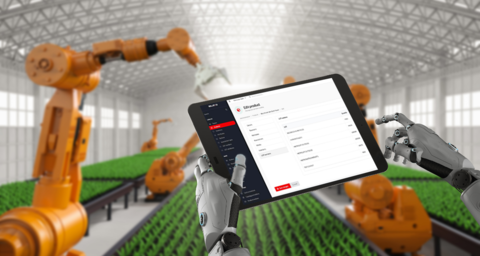Businesses are streamlining operations and enhancing customer experiences by integrating commerce platforms with ERP systems. This trend is backed by evidence showing significant improvements in supply chain logistics, increased customer engagement, and greater sales efficiency.
Integrated commerce platforms extending ERP systems are game-changers for supply chain logistics. To some degree they have been for years, but only recently outside of the enterprise-scale custom projects, has the commerce-platform to ERP platform relationship been accessible to smaller and medium sized operations. And to some degree we have the pandemic to thanks for accelerating this trend.
The COVID-19 pandemic dramatically accelerated the need for robust ERP-to-commerce platform integration and workflow automation customization. As businesses faced unprecedented disruptions, the ability to maintain seamless operations and adapt to rapidly changing market conditions became a core part of survival. Real-time data synchronization emerged as a critical tool, enabling companies to keep accurate track of inventory, swiftly process orders, and manage supply chain fluctuations with agility. With physical stores shuttered and online demand surging, businesses had to pivot quickly to meet customer expectations, highlighting the importance of automated, integrated systems that ensure continuity and efficiency, particularly when staff availability, and physical presence could not be guaranteed. This shift not only underscored the necessity for enhanced digital infrastructure but also drove innovation in automation, allowing businesses to tailor workflows to their specific needs and scale their operations effectively in an unpredictable environment.
The result? More accurate demand forecasting, reduced carrying costs, and optimized inventory turnover empowering the Admin Experience
Once this level of scale in automation and its impact of business success became clear, there was no going back, the cat was out of the bag, you get the idea - the world was going to be doubling down.
The power to maintain to-the-minute data accuracy with real-time synchronization between ERP systems and commerce platforms had become the norm. With a range of benefits that significantly enhanced operational efficiency and customer satisfaction, smaller and medium businesses realized that they not only could compete during lockdown, but could leverage this efficiency and scale forever.
With integrated systems enabling real-time data sharing, with inventory levels that were always current, accurate inventory management and seamless synchronization became the default for managing costly stockouts or overstock situations. Businesses – at least the ones that want to stay in business - now realized that they could keep track of their inventory across multiple channels, making it easier to manage stock in various locations. The result? More accurate demand forecasting, reduced carrying costs, and optimized inventory turnover empowering the Admin Experience.
For Customer Experience, real-time updates on order statuses and delivery timelines, businesses reached another level of enhanced order fulfillment and providing customers with accurate to-the-minute information about their purchases. This transparency boosted customer trust and satisfaction, with the ability to see exactly when their order would be delivered. Moreover, it allowed for efficient order processing, reducing the risk of errors, for a smooth and reliable customer experience.
Real-time data synchronization facilitates improved demand forecasting with accurate and up-to-date sales data. This enables businesses to anticipate market trends and customer preferences more effectively, allowing for smarter purchasing decisions and promotional strategies. Whether integrated with an internal finance platform, BI tool, tax compliance, or any other similar platforms, companies can adjust their stock levels and marketing efforts based on real-time insights, staying ahead of the competition keeping the human strategy skillset where it's most needed.
By integrating ERP and commerce platforms, streamlined business operations usually include automated routine tasks, reducing manual intervention and the potential for human error. This integration leads to a more streamlined workflow, freeing up valuable time for employees to focus on strategic activities. Operational efficiency is enhanced, and the business can scale more effectively.
Customers today expect instant gratification and real-time information; consciously or unconsciously waiting for a better and better customer experience. Integrated systems provide a consistent and accurate view of product availability, order status, and delivery timelines. This level of service meets customer expectations, leading to higher satisfaction and loyalty. Real-time synchronization also supports personalized marketing efforts, as businesses can tailor their offerings based on current data. Whether you're upselling, providing helpful suggestions, or even updating on lack of availability a customer may not want to hear, customer experience is best when it's accurate the first time and fast always.
As your business expands, the scalability and flexibility of your integrated systems can adapt to new requirements without the need for significant overhauls
Real-time data synchronization supports business growth by providing a scalable solution that can handle increased transaction volumes and more complex operations. As your business expands, the scalability and flexibility of your integrated systems can adapt to new requirements without the need for significant overhauls. This flexibility ensures that your technology grows with your business, maintaining efficiency and effectiveness.
Areas of business operations that benefit:
- Enhanced Visibility and Transparency: With an integrated system, businesses gain a unified view of their entire supply chain. This visibility is crucial for identifying bottlenecks, optimizing routes, and improving supplier coordination. Enhanced transparency leads to more efficient logistics operations, reducing costs and delivery times.
- Streamlined Order Fulfillment: Integrating commerce platforms with ERP systems ensures that orders are processed quickly and accurately. Automated workflows and real-time inventory checks enable faster order processing and fulfillment, enhancing customer satisfaction by meeting delivery expectations.
- Omnichannel Consistency: Customers expect a seamless experience across all touchpoints, whether online or offline. Integrated systems ensure consistent information and experiences across all channels, from website to mobile app to physical store. This consistency builds trust and satisfaction among customers.
Areas of customer experience that benefit:
- Efficient Customer Service: With integrated data, customer service representatives have instant access to comprehensive customer profiles, order histories, and inventory information. This access allows for quicker and more accurate responses to customer inquiries, improving overall service quality.
- Elevating Customer Experience: Customer experience is paramount in both B2C and B2B markets. Integrated systems play a critical role in delivering personalized and consistent experiences
- Personalized Interactions: An integrated commerce platform can leverage ERP data to provide personalized recommendations, tailored promotions, and customized communication. This level of personalization enhances customer engagement and loyalty, driving repeat business.
Growth opportunities businesses gain:
- Empowered Sales Teams: Sales representatives equipped with real-time access to ERP and commerce data can better serve customers by providing accurate product information, checking inventory availability, and processing orders on the spot. This empowerment leads to higher sales conversion rates and improved customer relationships.
- Faster Transaction Processing: Integrated systems automate many aspects of the sales process, from order entry to invoicing to shipment tracking. Automation reduces manual errors and accelerates transaction processing, enabling businesses to handle higher volumes of sales more efficiently.
- Data-Driven Insights: The integration of commerce and ERP platforms generates valuable data insights. Businesses can analyze sales trends, customer behaviour, and supply chain performance to make informed decisions. These insights drive strategic planning, marketing efforts, and operational improvements.
- Operational Efficiency: Automation reduces manual tasks, minimizes errors, and streamlines processes across the business. This efficiency frees up resources and allows employees to focus on strategic initiatives rather than routine administrative work. Efficient operations reduce costs and enhance productivity, creating a foundation for sustainable growth.
- Omnichannel Reach: Omnichannel capabilities are significantly enhanced by leveraging ERP data, allowing businesses to provide a consistent and seamless experience across multiple brands, regions, and customer segments. With integrated ERP-to-commerce platforms, businesses can synchronize inventory, order management, and customer data in real-time across all channels—be it online, in-store, or mobile, across country, market, or around the world. This ensures that customers receive accurate information and consistent service regardless of how or where they engage with the brand. Additionally, ERP integration supports the management of diverse regional and global markets, enabling businesses to tailor offerings, pricing, and marketing strategies to local preferences while maintaining centralized control. By effectively utilizing ERP data, companies can enhance customer satisfaction, drive loyalty, and expand their market reach both regionally and globally.
ERP-to-commerce platform integration and automation offer significant operational benefits, customer engagement improvements, and growth opportunities. Seamless data synchronization ensures efficient inventory management, streamlined operations, and enhanced cash flow management. This integration leads to better customer insights and personalized experiences, boosting satisfaction and loyalty. Furthermore, the scalability and flexibility of integrated systems enable businesses to expand effortlessly across brands, regions, and markets, maintaining a competitive edge. Ultimately, these capabilities position businesses for sustainable growth and success in an increasingly dynamic and demanding market landscape.


























